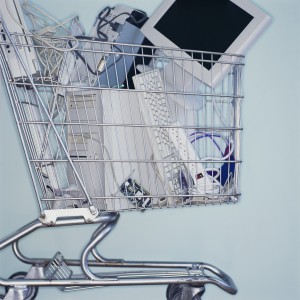By Neel Grover, Special to the eTail Blog
It’s true – thank goodness: we are slowly inching toward a healthier economy. Recent surveys such as one conducted by the University of Michigan indicate an uptick in consumer spending alongside consumer confidence since the summer of 2011. In a January 2012 survey by SteelHouse, 49 percent of online shoppers said they felt optimistic about the U.S. economy this year, and 58 percent reported they would be spending more money online. With so many ways to shop – via computer, the mobile web or mobile apps – today’s shoppers are equipped with an unprecedented set of real-time, easy-to-use online shopping options. Together, these factors indicate that e-retail is primed to flourish.

As expected, on-the-ball retailers are looking to make the shopping experience as convenient as possible to streamline the buying process. A few trends have arisen among the modern day shopper that will continue to define their future behavior.
The 24/7 Consumer
In a 24/7 world, consumers have access to the things they want, when they want them. Being an “on-the-go” society, smartphone users are leading the way for the next generation retail environment. From QR codes to location-based offers, consumers want to receive instant gratification from a retailer. Web-based shopping and apps are only one stage of the retail growth cycle. Offering mobile coupons that can be shown in brick and mortar stores or drawing shoppers to an app through an e-newsletter, the shopping environment is becoming truly 24/7 for everyone – anytime and anywhere.
The next frontier includes tablet commerce as well as contactless solutions that turn your smartphone into a mobile wallet. Capitalizing on this opportunity, marketers are beginning to optimize their web content for all platforms and make it accessible to all markets, as well as ensuring their mobile web offering is a media rich experience.
Social Shopping
The whole experience of shopping is what makes the consumer keep coming back for more. With online retail, consumers often lose the specialty of an in-store sales assistant or personal shopper, forcing marketers to keep the “fan” (whose opinion helps to shape the future of e-commerce and retail in general) in mind. According to ComScore, social networking takes up about one in six minutes of Internet users’ online time. Brands are seeing the need to utilize sites like Tumblr and Pinterest for everything from brand awareness to product development and customer service. Ensuring that a personal social shopping experience is put in place is extremely necessary.
The Online/Offline Shopper
Retailers are beginning to recognize that with so much of their time spent online, consumers want their shopping experience to be, well, different. Rather than a continuation of their online daily grind, online shopping should take some cues from the real shopping experience, to create a seeming departure from a day spent staring at the screen. Some social shopping platforms aim to replicate the important offline experience of physical shopping. Innovative online shopping experiences that reorient the shopper with the physical experience include video reviews of products and access to a virtual shopping community that’s viewing the same products as you at the same time. This kind of interactive shopping experience allows the customer to engage with fellow shoppers about specific products and also call upon available product experts, just like in-store personal shoppers. Each of these social shopping features enriches the online consumer’s experience and therefore increases the amount of time they spend online browsing, discussing and reviewing products. This naturally results in higher sales and more engagement with retail brands.
Consumer technology trends and devices will continue to mold the path for online retail behavior in today’s tech-driven society. But one thing is certain: e-commerce and m-commerce will continue to become more accessible and more personal in new and exciting ways.
Neel Grover is CEO and President at Buy.com, an online retailer of computers, video games, music and more, acquired by Japanese E-Commerce giant, Rakuten, in 2010.





Recent Comments